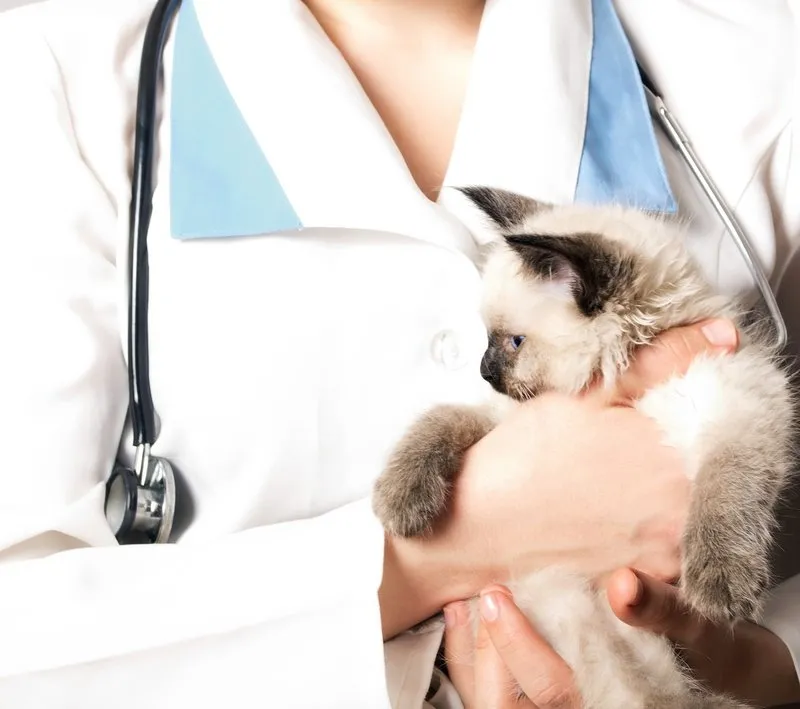For us Canadians, the first week of May is dedicated to Disaster Preparedness Week. This awareness event is not just targeted towards people; it is also highly relevant to pets. We understand that dealing with a major disaster is something nobody wants to experience. However, taking a few simple precautions can have a significant impact. As the saying says, an ounce of prevention! Continue reading for valuable advice from a local Markham, ON veterinarian on how to prepare for emergencies as a pet owner.
Stay On Top Of Your Pet’s Preventative Care
Disaster or no disaster, we always strongly recommend staying on top of your pet’s wellness and preventative care. This is crucial to their overall health and well-being. It can also become very, very important in emergencies. During disasters, there tends to be a significant number of loose animals, both wild and domestic, many of which could be carrying diseases or parasites. Additionally, many shelters and hotels may ask for documentation to ensure that your pet’s vaccinations are current.
Keep Identification Current
Microchips and identification tags are crucial! Disasters can be incredibly overwhelming and frightening. Even the most affectionate pet can still be prone to their innate fight-or-flight response, potentially leading them to run away if they become scared. Make sure that your beloved pet has a microchip and is always wearing identification tags! These things create an unspoken bond, linking you and your animal companion.
Although microchips are typically a one-time procedure, you’ll need to keep your information current. Make sure to update it whenever you relocate or update your contact details. Feel free to check your records at the AAHA Universal Pet Microchip Lookup.
Smart tags and GPS tags are also worth considering.
Have Paperwork Ready
It’s crucial to have the necessary documentation to demonstrate that your pet is up to date on the required vaccines and parasite control. It is best to have this ready in advance to avoid wasting time searching for it during an emergency.
We have a couple of strategies for this one:
- Store physical copies in your glove compartment. (This is also useful if you plan on bringing Fido to a park or going camping with him.)
- Take pics of them and store the photos in your phone’s gallery.
- Send scanned copies of the documents to your own email address.
- Store copies on a cloud drive.
Keep copies of your pet’s medical records and any necessary prescriptions as well.
Make A Pet First-Aid Kit
fires, floods, and other incidents are very dangerous. Pets are susceptible to all sorts of injuries during these events. Having a pet first-aid kit prepared is always a good idea. Keep it in or near your pet’s carrier for easy access.
There are plenty of options available online. In fact, there is a wide range of first aid kits designed specifically for various types of pets. You may want to get started with a kit designed for individuals, and then incorporate a few items tailored for pets. (Note: if you are going this route, you will probably need a bigger case. You could consider using a tackle box, an overnight toiletry bag, or a small backpack.)
Here are some of the things you should consider including:
- Nail Clippers
- Tweezers
- Wire Cutters
- Styptic Powder
- Gauze
- Paper Towels
- Cotton Swabs
- First-Aid Tape Syringes
- Eye Droppers
- Eye Wash Solution
- Chlorhexidine
- Disinfectant/Alcohol Wipes
- Bandages
- Iodine
- Towels
- Hydrogen Peroxide
- Round-End Scissors
- Popsicle Sticks
- Pliers
- Gloves (Single Use)
- Flashlight
- Magnifying Glass
Of course, that first-aid kit won’t be of much use if you aren’t sure what to do. You may want to buy or print a high-quality pet first-aid brochure and store it in your kit. Downloading a pet first-aid app can be quite helpful as well. The Red Cross has an excellent one. However, even if you have the app, it’s a good idea to keep a physical copy of important documents in case of a disaster, as cellular networks may not be functioning in a disaster.
If you don’t currently have a muzzle in your emergency bag, it would be wise to include one in your first-aid kit. Even the most gentle dog could possibly bite when they feel threatened or frightened!
Put Together A List Of Shelters
It can be incredibly beneficial to have a well-thought-out plan in place prior to a disaster occurring. Printing out a comprehensive list of pet-friendly hotels and emergency shelters within a few hours’ drive can be incredibly helpful.
We would also advise keeping a hard-copy map in your car. This is just good to have on hand in case cell service is unavailable and GPS is not an option.
Get A Emergency Pet Travel Carrier
Your furry bestie will require a carrier. We always suggest that people travel with pets in crates for safety purposes, even if just coming into the clinic. In an emergency, this is even more important. We suggest investing in a high-quality hard-shell carrier because it offers better safety than a fabric one. Including your contact information on the carrier is also recommended. (Tip: A luggage tag would be suitable for this.)
Create a Pet Emergency Bag
We highly recommend that pet owners keep emergency bags readily available for their furry, scaly, or feathered companions. This can also serve as a travel bag.
Here are a few key elements to consider:
- Collapsible Dishes
- Water
- Food
- Treats
- A Harness
- A Leash
- Blankets
- Toys
- Calming Products (Dogs And Cats)
- Wipes And Towels
- Any Medications Your Pet Is Currently Taking
- First-Aid Kit
These are the basic ones. The specific items needed may vary, depending on the type of pet you own. For instance, Fluffy will require a litterbox and litter, while Fido will need waste baggies and a tie-out line. It’s a good idea to consider using a muzzle for dogs. You and your pet may dislike it, but if a shelter mandates it, it is a minor concession to make. If your furry friend has thin fur and needs some extra warmth during the winter, make sure to provide them with a cozy coat. If you have a pocket pet, you may want to include cardboard or paper, so they have something to chew. It’s also worth considering including a thermal blanket. Talk to your Markham, ON veterinarian for personalized guidance.
Ensuring the Safety of Your Pets in Case of Fire
Disaster preparation also entails getting ready for fires. If you have children, you may have already placed stickers on your windows indicating the number of kids in your household. Additionally, you can apply this technique to pets by sharing information about the types of pets you own and their common hiding spots. Firefighters often try to save pets when they can.
Talk To Your Family
Additionally, it is highly recommended to establish an emergency plan with your household members. That may include things like where to meet in an emergency, or what to grab in an evacuation. Remember to involve your furry friend in those conversations too.
Reach out to Your Markham, ON Animal Hospital
Do you have any inquiries regarding the proper care of your beloved pet? Feel free to reach out to our Markham, ON pet clinic at any time!






!Social Media Icons